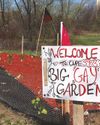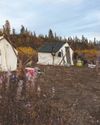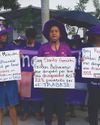
“We’ve heard that people like to make memes about Doug Ford. Could you describe one of them?” asks a journalist from a mainstream media outlet.
“I’m sorry, I can’t,” replies Amina Vance, an 18-year-old organizer of the Students Say No (SSN) group fighting Ford’s cuts to public education. “Let me tell you another story.”
Memes are low-hanging fruit for reporters hoping to play up the youth and social-media savvy of high-school organizers – but a bustling social movement they do not make. Amina is right: there is a better story here.
Since coming to power, Ontario’s premier, Doug Ford, has relentlessly attacked public education: proposing a 20 per cent education funding cut; introducing targeted erosion of arts courses; increasing class sizes and cutting at least 5,844 teachers’ jobs; slashing the Ontario Autism Program, Indigenous curricula, and post-secondary financial assistance; introducing mandatory e-learning and a classroom cellphone ban; and slashing $100 million from a school repair fund.
But students of all ages have been relentless, too. On April 4, nearly 200,000 high-school and middle-school students across Ontario walked out of their classes in protest of Ford’s devastating cuts to education. More than 700 schools participated in the largest student walkout in Canadian history. Reporters and older activists alike are asking: how did high schoolers pull it off?
Diese Geschichte stammt aus der September/October 2019-Ausgabe von Briarpatch.
Starten Sie Ihre 7-tägige kostenlose Testversion von Magzter GOLD, um auf Tausende kuratierte Premium-Storys sowie über 8.000 Zeitschriften und Zeitungen zuzugreifen.
Bereits Abonnent ? Anmelden
Diese Geschichte stammt aus der September/October 2019-Ausgabe von Briarpatch.
Starten Sie Ihre 7-tägige kostenlose Testversion von Magzter GOLD, um auf Tausende kuratierte Premium-Storys sowie über 8.000 Zeitschriften und Zeitungen zuzugreifen.
Bereits Abonnent? Anmelden

PLATFORMS FOR PEOPLE, NOT PROFIT
Digital platforms boast that they’ve “democratized” cultural production. But what would truly democratic platforms look like in Canada?

ORGANIZING THROUGH LOSS IN THE HEART OF OIL COUNTRY
The story of climate justice organizing in Alberta, at the heart of the tarsands, is the story of a group of young activists learning what it means to lose, and keep on fighting

GROWING THE LABOUR MOVEMENT
How unions are using community gardens to engage members, nourish communities, and help strikers weather the picket line

A NEW ERA FOR OLD CROW
In the Yukon’s northernmost community, the Vuntut Gwitchin First Nation is reckoning with how to preserve their land and culture, amid a warming climate and an influx of tourists

“At Least Hookers Get Wages”
The risky business of sex work in the gig economy

The Literal – And Literary – Futures We Build
Briarpatch editor Saima Desai talks to two judges of our Writing in the Margins contest about Idle No More and MMIWG, ethical kinship, writing queer sex, and their forthcoming work.

The Cost Of A T-Shirt
In Honduras, women maquila workers are fighting back against the multinational garment companies that they say are endangering their health and safety.

Milking Prison Labour
Canada’s prison farms are being reopened. But when prisoners will be paid pennies a day, and the fruits of their labour will likely be exported for profit, there’s little to celebrate.

Bringing Back The Beat
In mainstream media, labour journalism has been replaced by financial reporting and business sections. But journalism students are raising the labour beat from the grave.

There's No Journalism On A Dead Planet
Corporate media owners are killing local newspapers – which is making it impossible for everyday people to understand the on-the-ground impacts of the climate crisis